First Time Flying? 35 Essential Travel Tips You Need to Know
Nervous about your first flight? Are you unsure about what to expect at the airport or how to make your journey as smooth as possible? For first-time flyers, air travel can seem overwhelming. But with a bit of preparation and the right mindset, you can manage airports and flights smoothly. This guide covers practical travel tips to help make your first flying experience smooth.
Preparing For Your First Flight
What To Do Before You Even Leave The House?
Flying for the first time requires some preparation, and good preparation helps reduce stress when it’s time to head to the airport. Here’s how you can get ready for a smooth experience before you even step out the door.
Packing Tips
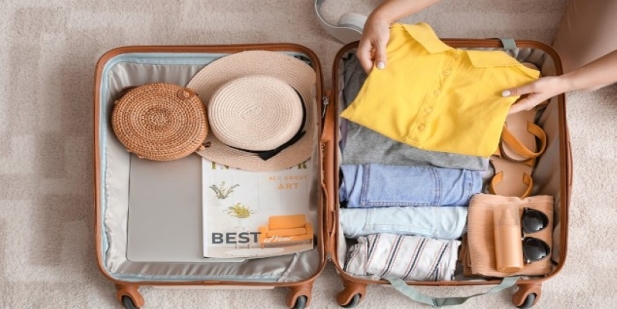
The first step is packing smart. For your carry-on, make sure to pack the essentials: travel documents, medications, a few snacks, and any items you might need during the flight (like a book or headphones). Most airlines allow one personal item and one carry-on bag, but make sure you check the size restrictions for your specific airline to avoid any surprises at the gate. Consider packing a small travel pillow or blanket to stay comfortable during the flight.
Documents You Need
Having your travel documents in order is crucial. Ensure your passport (for international travel) or a government-issued ID (for domestic flights) is readily available. Keep your boarding pass handy, either printed or on your phone. If you're flying internationally, you may need a visa to check the entry requirements for your destination.
Pre-Flight Checklist
A quick checklist can help you ensure you don’t forget anything. A few things to remember:
- Ensure you’ve packed everything, including chargers, toiletries, and extra clothes if necessary.
- Check your flight status online to see if there are any delays or changes to your flight.
Set a reminder to leave your house with enough time to account for potential delays on your way to the airport. Aim to arrive at least two hours before a domestic flight or three hours before an international one.
By following these packing and preparation steps, you’ll feel much more in control when it’s time to head to the airport. The more organized you are ahead of time, the less stressful the journey will be.
Navigating The Airport
Mastering Airport Signs And Procedures
Once you arrive at the airport, the key is to stay calm and follow the signs. Airports are designed with clear signage, and the staff is always available to assist. Here's a simple breakdown of what to expect as you navigate your way through.
Check-In Process
Upon arrival, the first stop is the check-in desk. If you've already checked in online, you can head straight to baggage drop or security. If not, you'll need to stand in line to check in. At the counter, you'll show your ID or passport, and if you have checked luggage, it will be weighed and tagged.
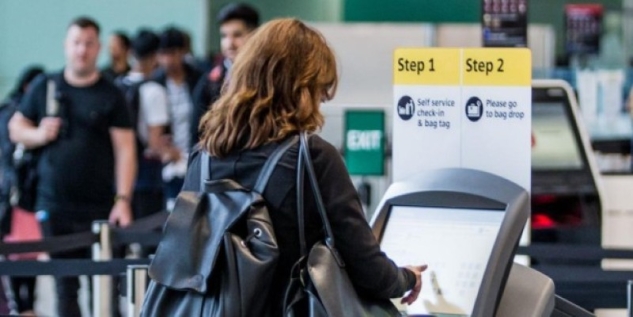
If you're flying internationally, you may need to provide additional documentation, such as a visa or proof of return travel arrangements. Have all necessary documents ready before approaching the desk.
Finding Your Gate
Once you have your boarding pass, the next step is to find your gate. Most airports have clear signage that indicates the direction to follow. Check the screens for your gate number and ensure you're heading to the correct terminal. If you have extra time before boarding, you can use extra time to visit shops or get food, but always keep an eye on the time.
Boarding
When it’s time to board, pay attention to the announcements and watch for your group or seat number to be called. Boarding is usually done in groups to make the process smoother.
Getting Through Security With Ease
Security lines can be intimidating for first-time flyers but knowing what to expect can make the process much easier. Here’s a guide to getting through airport security with minimal hassle:
What To Wear?
To expedite the security screening process, wear shoes that are easy to remove and avoid wearing metal jewelry or accessories. If you wear a belt, consider removing it ahead of time to expedite the process. Choose clothes with fewer pockets, as emptying your pockets will be part of the procedure.
TSA Regulations For Carry-Ons
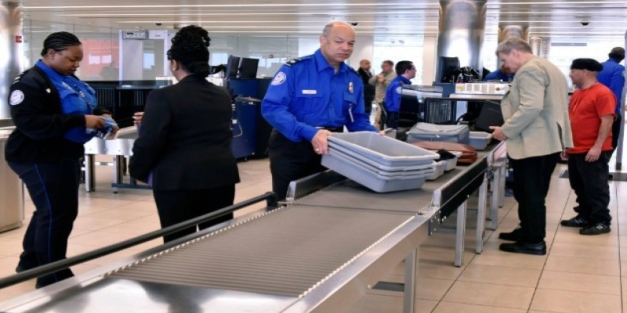
Make sure you’re familiar with the Transportation Security Administration’s (TSA) guidelines for liquids, gels, and sharp objects. In general, liquids in containers larger than 3.4 ounces should be packed in checked luggage. Any liquids you do bring should be in a quart-sized bag for easy inspection.
TSA Precheck Or Global Entry
If you travel frequently, you might want to consider TSA PreCheck or Global Entry, which offer expedited security screening for pre-approved travelers. It’s a time-saver, but for first-time flyers, just follow the signs, be patient, and get ready for your first security experience.
Onboard Tips For First-Time Flyers
Making Your Flight Comfortable
The flight itself can be the most daunting part of air travel, but with a little preparation, it can be quite enjoyable. Here’s how to make the most of your time onboard.
What To Expect On Your Flight?
Flights can vary in length and amenities depending on the airline and the distance traveled. For shorter flights, expect basic seating and limited snacks or entertainment. On longer flights, there might be personal screens with movies and music, as well as more substantial meal options. If you’re flying with a budget airline, be prepared for fewer frills.

Regardless of the flight length, don't forget to bring your own entertainment. Download movies, music, or e-books in advance, so you're not left scrolling through limited options. Headphones are essential for blocking out noise and enjoying your media.
Dealing With Flight Anxiety
It’s common to feel anxious about flying. If you start to feel anxious, try deep breathing or distract yourself with a good movie or podcast. It can be helpful to discuss any concerns you may have with the flight attendants—they're there to ensure your safety and comfort.
If turbulence is something you’re worried about, Turbulence is common and typically not a safety issue. Remember, pilots and flight crews are highly trained to handle turbulence, and your plane is built to withstand it.
Staying Hydrated And Healthy
Flying can leave you feeling dehydrated, so be sure to drink plenty of water during the flight. It’s a good idea to avoid excessive caffeine or alcohol, as they can make dehydration worse. To keep your skin from drying out, consider using a travel-sized moisturizer and lip balm.
For long flights, consider walking around the cabin a few times to avoid stiffness and swelling. If you're prone to jet lag, stick to the new time zone's schedule for meals and sleep to adjust more quickly.
Arrival: What Happens After Landing
Navigating Your Destination
Landing at a new airport can feel overwhelming, but knowing what to expect will make the experience far less stressful. Here’s what to do once you’ve touched down at your destination.
Customs And Immigration
For international flights, the first stop after disembarking is customs and immigration. You'll need to present your passport and any required entry forms. Officers may ask you a few questions about your trip, so have your answers ready. Ensure you know your next destination or have your accommodation details readily available in case they are asked.
After you clear immigration, you’ll head to baggage claim to pick up your luggage. Keep an eye on the monitors for your flight number and the carousel number that corresponds to your baggage.
Getting Your Luggage
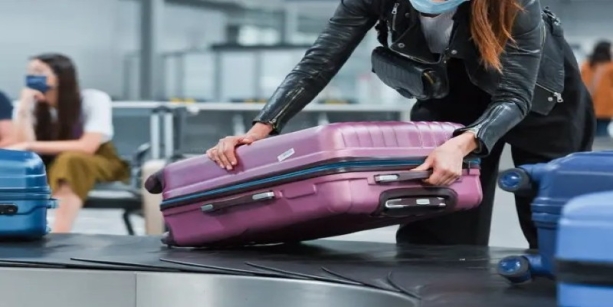
Baggage claim can be busy, so allow time to locate your luggage of arriving at an airport, but with a little patience, you'll find your luggage. It's a good idea to identify your bag with a unique tag or ribbon so you can spot it easily if it doesn't show up or gets delayed. If this happens, head to the airline's baggage services desk for assistance.
How To Handle Transportation Upon Arrival?
Once you’ve cleared immigration and baggage claim, you’ll need to figure out how to get to your final destination. Most airports offer several transportation options.
Airport Transfers
Most airports offer shuttle services, taxis, or private transfer options to take you to your accommodation. If you're on a tight budget, public transportation is often the most cost-effective option. Be sure to check in advance how to get to your hotel or the city center from the airport.
Many airports also offer ride-sharing services, such as Uber and Lyft, which are convenient but may be slightly more expensive than other options. Always check your app or the designated pickup area for instructions to avoid confusion.
Tips For First-Time Travelers
If you’re unfamiliar with the area, consider pre-booking transportation before your trip. It can save time and help ease any travel anxiety. Also, keep the local currency on hand in case you need to pay for transport that doesn’t accept cards.
When in doubt, ask the airport staff for help—they can point you in the right direction or offer recommendations for the most efficient transportation options to your destination.
Link: Transportation Tips for Travelers
Common Mistakes To Avoid For First-Time Flyers
Pitfalls Every First-Time Flyer Should Avoid
First-time flying can be tricky, but avoiding these common mistakes will help you have a smooth and stress-free journey. Here are some pitfalls to watch out for:
Overpacking

It's easy to pack too much when you're nervous about what you might need, but overpacking can make your travel experience more difficult. Please note that most airlines have baggage weight limits, and if your bag exceeds these limits, you'll be charged additional fees. Stick to packing the essentials and remember that you can always buy what you need once you arrive at your destination.
Not Checking In Early
Many first-time flyers forget to check in ahead of time, but doing so can save you time and stress. Online check-in typically opens 24 hours before departure, and by checking in early, you'll ensure smoother airport experience. Early check-in can also give you a better chance of securing your preferred seat, especially if you're traveling on a busy flight.
Misunderstanding Time Zones
Time zones can be confusing, especially when you’re flying internationally. Be aware of the time difference between your departure and arrival cities and adjust your watch or phone accordingly. Also, keep in mind that your body may need time to adjust to the new time zone, so try to stay awake or sleep according to the time in your destination.
Wrapping Up Your First Flight Experience
What To Do Next: Returning Home?
After completing your first flight, it's easy to feel relieved, but there are a few things to keep in mind to wrap up your journey smoothly and prepare for future trips.
Dealing With Post-Flight Fatigue
Jet lag and fatigue are common after a long flight, especially when crossing multiple time zones. It's important to stay hydrated after your flight to help your body recover. If possible, try to stay awake until it's an appropriate time to sleep in your destination's time zone. Avoid napping for long periods during the day if you're adjusting to a new time zone.
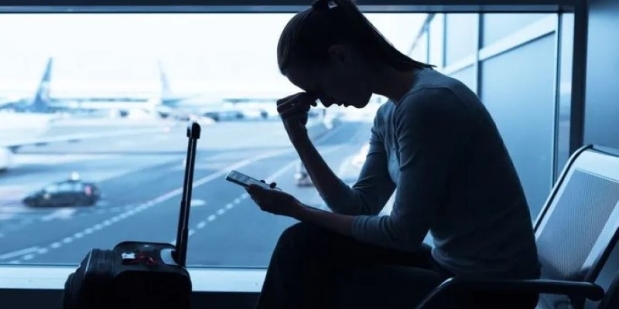
If you’ve arrived home, getting back into your normal routine may take a day or two. Focus on rehydrating, eating healthy meals, and getting enough sleep to recover from any travel fatigue.
Preparing For Future Trips
Now that you’ve completed your first flight, traveling will feel much easier the next time around. As a seasoned traveler, you'll become more comfortable with airport processes, packing, and navigating flights. Use your experience to make improvements in the future—whether it's better packing, checking in early, or finding strategies to reduce travel anxiety.
If you plan to fly again soon, you may want to consider signing up for loyalty programs with airlines, which can offer perks such as early boarding, lounge access, and priority security screening.
Conclusion
After your first flight, future trips will likely feel more manageable. Flying doesn't have to be a stressful experience, and each trip only gets easier as you gain more experience. By following these tips and preparing in advance, you'll soon feel like a seasoned traveler, effortlessly navigating airports, flights, and destinations. Staying organized and learning from each experience can improve future trips.
Was this helpful? Share your thoughts
- Learned practical methods
- Solved my questions
- Inspired new ideas
-
![Snorkelling In Bali For Beginners: Best Spots & Tours]() Snorkelling In Bali For Beginners: Best Spots & Tours
Snorkelling In Bali For Beginners: Best Spots & Tours -
Diving into Bali's underwater world offers an accessible adventure for those new to snorkelling, where calm bays and colourful reefs create a welcoming environment. This guide covers everything from ideal spots to practical advice, ensuring beginners feel confident and prepared. With its affordable options and diverse marine life, Bali stands out as a top destination for first-timers seeking memorable experiences without overwhelming challenges.
Explore More
-
![10 Best Ways To Book Affordable Accommodation]() 10 Best Ways To Book Affordable Accommodation
10 Best Ways To Book Affordable Accommodation -
Ever wondered how some people consistently score the best hotel deals? Booking affordable accommodation doesn't have to be a struggle. With the right approach, you can enjoy a comfortable stay without breaking your budget. Let's explore some effective ways to book affordable hotels and maximize your travel budget.
Explore More





